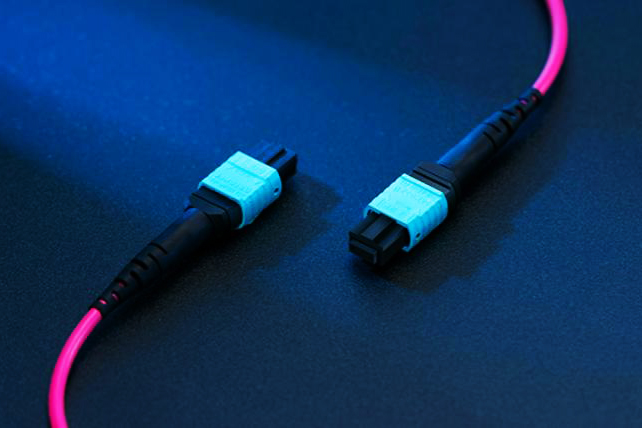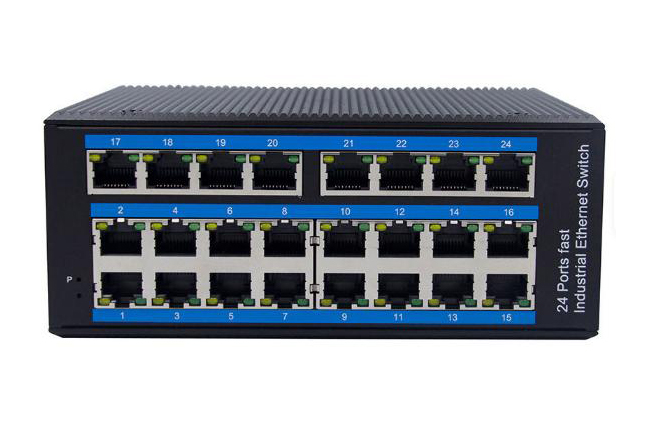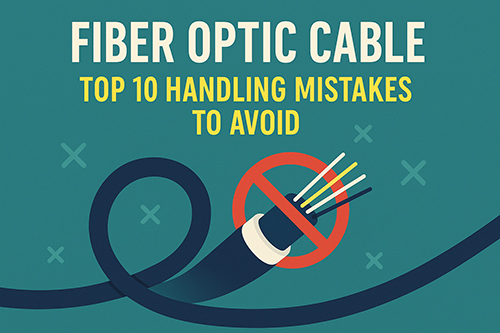.jpg)
How to Plan MTP/MPO Cabling Systems for Real-World Network Environments
1. Why MTP/MPO Is Gaining Ground
As 40G and 100G networks become common across data centers and enterprise backbones, traditional fiber cabling starts to show limits—especially in density and installation time. That’s where MTP/MPO cabling systems step in.
Rather than pulling dozens of duplex cables, network teams can deploy pre-terminated MTP assemblies in minutes. It’s not just faster—it’s cleaner and scales more predictably.

2. What You Actually Need to Build One
MTP/MPO Patch Cords
These are the most visible parts—bundled fiber cables with MTP/MPO connectors on one or both ends. They come in 8, 12, 24, 48 fibers and beyond, typically built with OM3 or OM4 multimode fiber.
If you're connecting spine-leaf switches or storage arrays, trunk cables (straight-through) are common. For linking hardware ports to panels, breakout cables work better. Fiber count depends on port layout and future upgrade plans.
Cassettes
MTP cassettes serve as the bridge between high-density MTP ports and common LC/SC terminations. They’re useful when you want to plug MTP at the back, and expose LC at the front—no splicing needed.
Mounted inside enclosures or patch panels, these cassettes help keep layout modular and easy to scale.
Adapters
These are passive but necessary—small couplers that align MTP/MPO connectors inside panels. Poor adapter alignment can cause signal loss, so quality matters more than it seems.
Look for models rated for repeated connects/disconnects with minimal insertion loss.
Adapter Panels
Panels allow clean, front-facing port access. You’ll usually find 4-, 6-, 8-, or 12-port layouts, depending on enclosure size and cable volume.
They’re often preloaded or compatible with cassettes and allow centralized patching with less clutter. A good panel can reduce the time it takes to swap connections during upgrades or repairs.
3. Where MTP/MPO Systems Fit Best
In SAN-Heavy Data Centers
Storage networks rely on fiber bandwidth, and dense cross-connects are the norm. MTP cassettes make sense here—fast to patch, easy to label, and manageable even when hundreds of ports are involved.
In Colocation Sites
Tenants don’t always know how fast they’ll need to scale. High-density MPO trunks allow flexible growth—without pulling new cable bundles every time a rack changes.
In Enterprise and Campus Cores
IT teams often lack specialized fiber training. A plug-and-play setup using pre-terminated MTP kits means fewer errors during rollout—and future expansions are simpler too.
4. Wrapping Up
MTP/MPO isn’t just a trend—it’s now a go-to method in environments where fiber count is high and space is limited. While the initial cost may be higher than conventional cabling, many teams find that the reduced install time and long-term manageability more than offset it.
If you're planning a new core or upgrading to 100G, it’s worth considering MTP at the design stage—not as an add-on.
Stanford Optics provides custom-length MTP/MPO assemblies, cassettes, and panels suited to high-performance networks. Whether you're working on a new build or retrofitting an existing site, we can help configure a system that fits your fiber plan, rack layout, and scaling roadmap.




